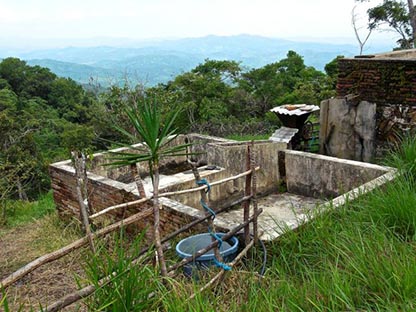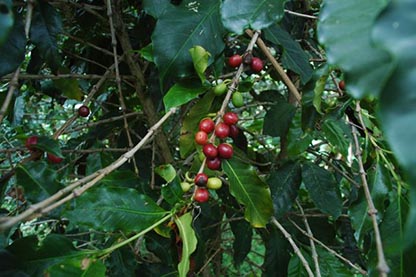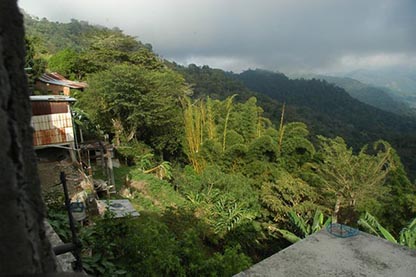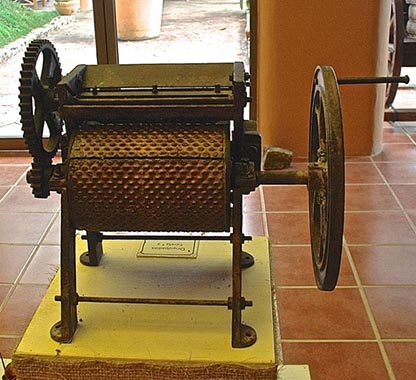How Coffee Put Puerto Escondido On The Map
Coffee came to Oaxaca big time in the 1870s, a time when Mexico, under the presidency of Porfirio Diaz, was developing cash crops for export. Coffee consumption in Europe and the U.S. was expanding exponentially and the mountains of the Southern Sierra Madre had just the right altitude and climate for the coffee trees and there was investment capital from Miahuatlán plus government subsidies. The only problem was that the indigenous population did not want to be thrown off their communal land or to leave their farms to become peons on coffee plantations.
Nonetheless, through various machinations, including the creation of a new municipality — Pluma Hidalgo — in 1880, communal land became privatized and large plantations flourished in the districts of Pochutla, Juquila and Jamiltepec.
Coffee production is very labor intensive, especially during the harvest. When the Chatinos of the Nopala and Juquila region started to grow their own coffee trees, it became harder for the large fincas to find workers. To discourage small producers, Juquila imposed a tax of three pesos per arroba of coffee. Sometimes the fincas had to resort to force, rounding up campesinos and not releasing them until the coffee was picked.
On April 6, 1896, Chatino Indians attacked the district capital of
Juquila… Numbering some one thousand, they protested against a
new tax law as they swept through the area sacking and pillaging.
Shouting “Death to all who wear pants,” they struck out violently
against the gente decente [whites and mestizos dressed in European
garb]. They burned the town hall and the judicial archives. They beheaded
twenty-two townspeople with machetes, among them two
judges, the jefe politico [prefect], the municipal president and other
officials.
Francie Chassen-Lopez. p. 1.
The rebellion was quashed by the army; 30 of its leaders were executed and many others were exiled to Quintana Roo. The new jefe politico, Carlos Woolrich, decreed that no one could enter Juquila in the traditional garb — huipiles for women or camisa y calzón de manta (rough cotton tops and bottoms) for men. But the tax on private land valued at less than 100 pesos was repealed. The rebellion became known as the “War of the Pants.”
The plantation owners’ victory, however, was short-lived. In 1897 the price for a quintal of coffee fell from 35 to 6 pesos. The international coffee crisis – caused by over production throughout Latin America - destroyed the major Mexican coffee growers who saw themselves forced to sell their fincas at rockbottom prices, mainly to German companies.
Puerto Escondido had only 27 inhabitants in 1927, when coffee first started being shipped from the port. Puerto was designated an international port with its own customs house in 1929. The population had grown to 55 by 1930 and more than tripled in the next ten years, reaching 169 in 1940. (It grew to 281 inhabitants by 1950 and 764 by 1960.)
The beans from plantations in San Gabriel, Nopala, Juquila and San Juan Lachao would arrive by burro, or later by plane, to the town of San Pedro Mixtepec, where over 100 women would do the selection and processing. From there it would be transported by truck over dirt roads to Puerto. The biggest producers were the Silva Sisters, owners of the Sinai and Soledad plantations, the German, Felipe Merkling, of La Korruba, and Guillermo Rojas Mijango of the Jamaica plantation which was founded by Vidal Rojas Alderete around 1870. The Jamaica plantation in San Gabriel Mixtepec remains in the hands of the Rojas family to this day.

In 1943, Mexico declared war with Germany, and Merkling was given the option of renouncing his nationality or leaving the country. He chose to return to Germany. Guillermo Rojas Mijangos bought La Aurora, a property of Korruba, at a government auction after the war. Rojas Mijangos also built the the airstrip on the Rinconada and was the only coffee producer to fly beans into Puerto.
The last shipment of coffee left Puerto in 1975. Some of the large fincas, like Soledad, no longer grow coffee although it does process locally grown coffee and keeps its brand. But the story of coffee in our region of Oaxaca continues. High quality, certified organic, specialty coffee coming from plantations like Sinai and Finca las Nieves, both in San Juan Lachao, are winning awards and finding international buyers for their product. Guillermo Rojas Saldaña produces specialty coffee at the finca Jamaica in San Gabriel. A coffee warehouse still exists just up the road from the Capitanía del Puerto on calle Marina Nacional. It now houses the Atemoztli music bar.
Most of the municipal presidents of San Pedro Mixtepec for the last 100 years have come from families who own, or owned, coffee plantations in San Gabriel Mixtepec. The names Silva, Gopar, Rojas, and Ramírez keep repeating.
Sources:
Chassen-Lopez, Francie, From Liberal to Revolutionary Oaxaca,
1867-1911; Pennsylvania State University Press, 2004.
Gopar Martinez, Eleuterio, Acercamiento microhistórico al pueblo
de San Pedro Mixtepec, Oaxaca, 2012.













